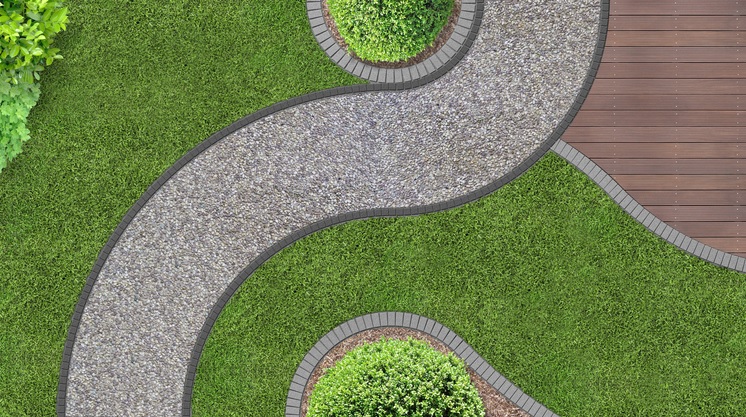Principles of Landscape Design
Reading time: 6 minutes
- 1. Balance in Landscaping
- 2. Harmony in Landscape Design
- 3. Colour and Tone
Low-maintenance
Plants that require minimal maintenance are ideal if you can’t get out into the garden as often as you would like, or if you lack a green thumb. There are lots of flowers, shrubs and grasses that need little attention yet still make a statement. Here are some examples:
Low-maintenance plants:
-
Peonies – almost drought-resistant, so won’t need too much attention and can grow in the same area for years
-
Hydrangeas – can thrive in the shade and are easy to prune
-
Perennial Geranium – brightly coloured and are naturally insect-repellent
Low-maintenance grasses:
-
Mexican Feather Grass – provides structure to your garden and only needs cutting back once a year
-
Artificial Grass – suitable for gardens used throughout the year
- Carex ‘Evergreen’ – doesn’t spread but needs to be cut back by 1/3 annually
- 4. Repetition in Landscape Design
- 5. Simplicity and Style

What should I know before landscaping?
Landscaping has the potential to be quite complex, so it’s advisable to plan your steps ahead to allow the process to go as smoothly as possible.
-
Practicality – Ensure you have the time, budget and resources to fulfil your design
-
Research – Have a look at landscaped gardens, similar in size to your own, for inspiration
-
Realistic – Will your landscape design be a DIY job, or will you need to find an expert to help? Consider these points before taking on a new project
Do I need to find a landscaper?
It could be worthwhile choosing a landscaper to give practical help and advice with larger jobs, such as laying a new lawn or constructing a terrace.
Finding the right landscaper takes time and can be expensive so it’s a good idea to get a few quotes before commiting.
What is a landscape plan?
Before starting work on an outdoor space, it’s a good idea to prepare with a clearly drawn out landscape plan. By drawing the layout of the area that you intend to landscape, you'll have a better understanding of what you want to add, keep or remove. Make sure that your plan uses scaled dimensions which you can use for reference when buying materials.
Levelling and preparing sites for landscaping
Levelling or replacing a garden can be difficult without the help of an expert. If you don’t want to completely replace your lawn here’s a method to treat uneven or bumpy areas:
-
Remove high points or bumps – using a spade, dig out the high points of your lawn a few centimetres below the level of your garden and dispose of the soil
-
Add top soil – fill in any dips or holes with top soil, and gently use your foot to ensure the soil is compact
-
Level the soil – use a levelling rake, which is wider and flatter than a regular rake, to spread the soil evenly
-
Seed the area – apply good quality grass seed at around 50g per square metre onto the newly levelled areas. Then lightly compact the soil using a roller
-
Water the soil – once the soil is compacted, spread more grass seed at around 30g per square metre and water the area completely
What time of year is best to landscape?
If you would like your garden finished and ready for the summer, you may want to think about starting work in the late autumn/early winter.
Planting trees, shrubs or flowers in autumn and winter is ideal as the weather is usually drier in summer months. If you’re still unsure, we have a handy gardening calendar sharing jobs that you can do throughout the year.
We hope you found these principles useful and will keep them in mind for your landscape design. Explore our gardens and landscaping range to get you started.
Disclaimer: The information contained on this page is intended as an overall introduction and is not intended as specific advice from a qualified professional. Travis Perkins aims to avoid, but accepts no liability, in the case that any information stated is out of date.











